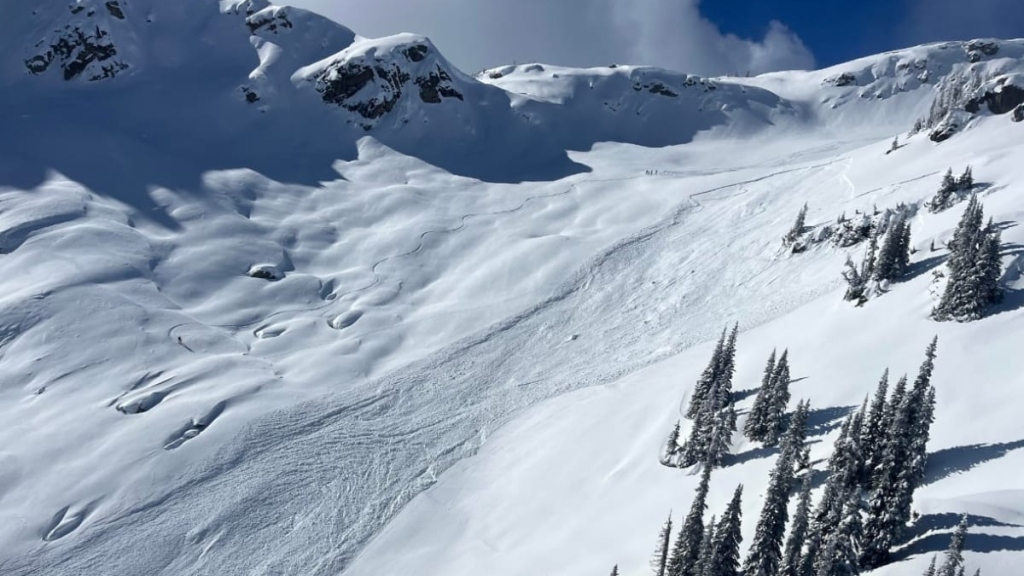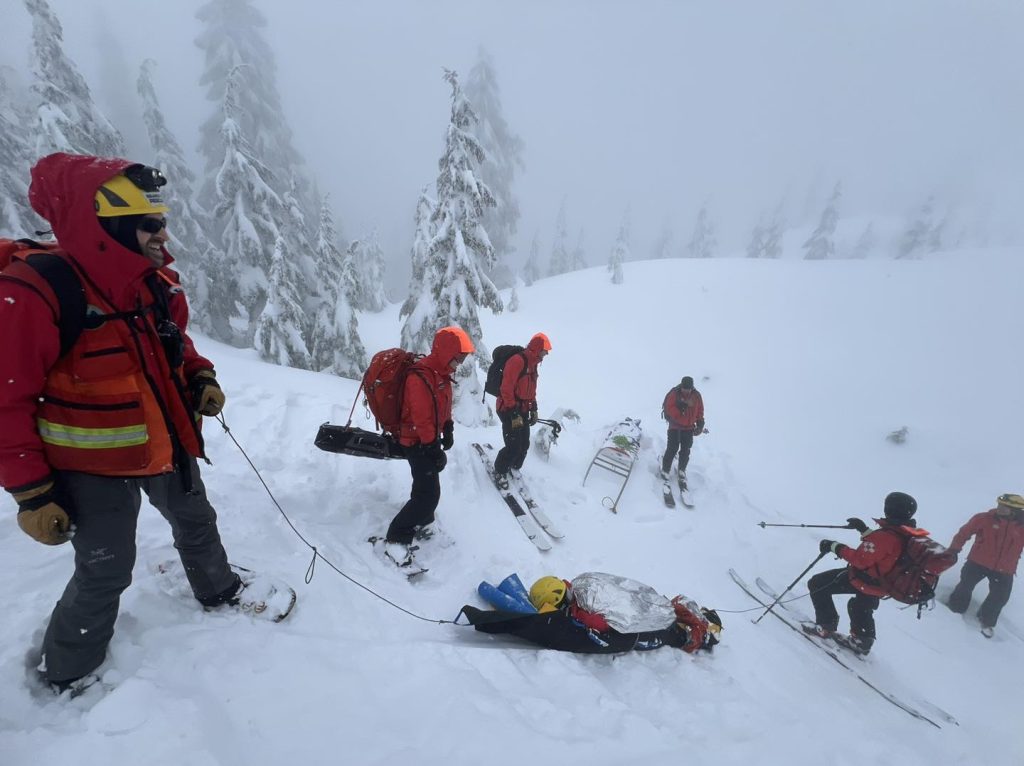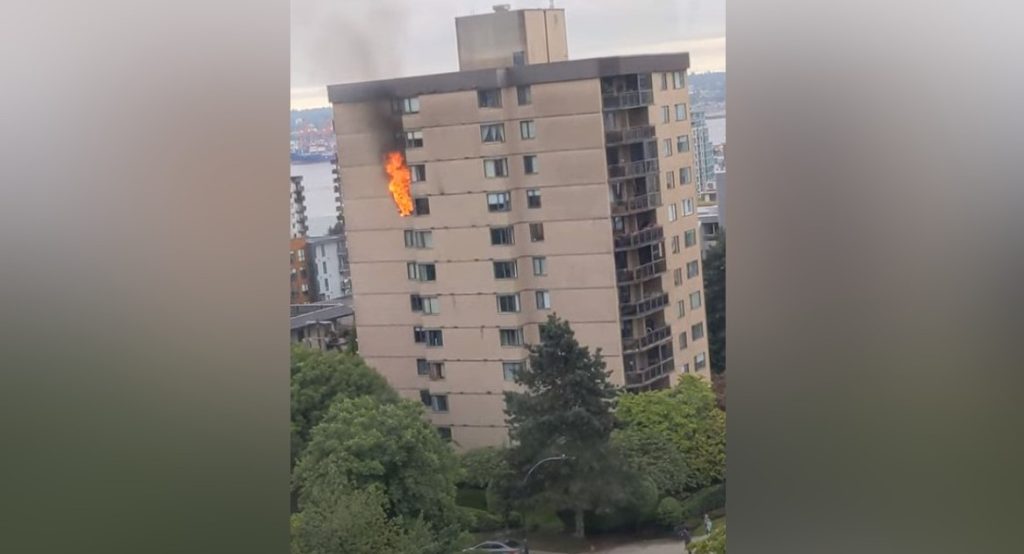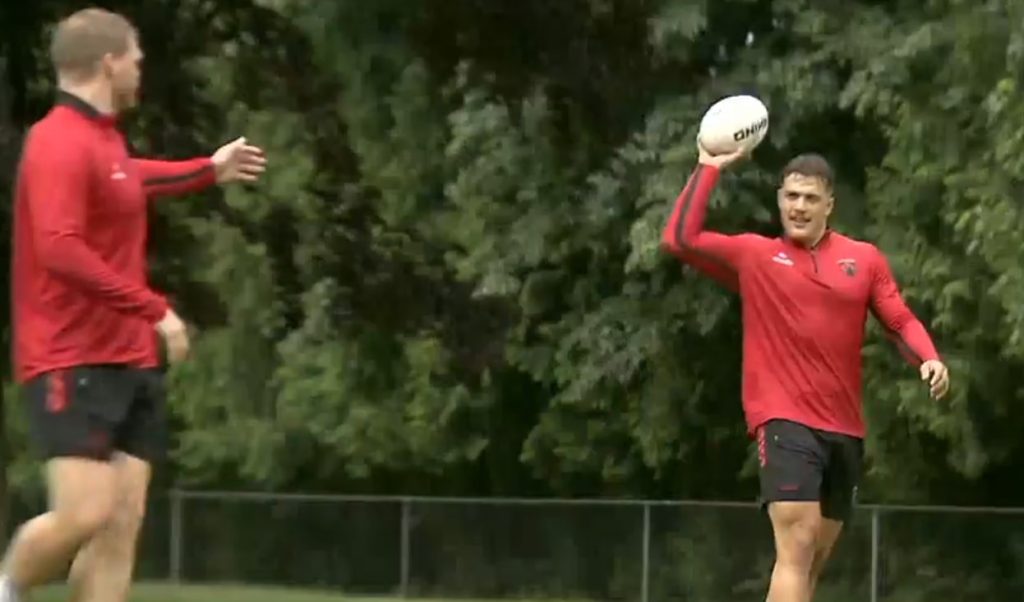B.C. avalanche risk rises in backcountry as warm weather rolls in

Posted March 14, 2024 11:36 am.
Avalanche warnings have been issued in B.C. for the backcountry, as temperatures rise and warmer weather sets in.
Avalanche Canada says the risk of a slide in the coming days is increasing in many parts of the province, including the North Shore mountains, Sea to Sky country, and areas of Vancouver Island.
The danger rating for the North Shore is listed as high in the alpine and treeline, and considerable below treeline for Thursday, Friday, and Saturday. Up through Whistler and beyond, the danger rating is high for all categories, with people urged to avoid avalanche terrain particularly during “periods of strong sun.”
Tyson Rettie, an avalanche forecaster with Avalanche Canada, says there’s already a weak layer from early February that drove a special warning earlier this month. That layer, he says, “is still producing human-triggered avalanches, remotely triggered avalanches, as well as natural avalanche activity.
“Once we add warming to that and we add clearer skies and more intense solar input, the size and likelihood of natural avalanches will probably increase,” Rettie explained on a podcast on March 12.
“We had some fairly warm weather, late January, early February, as we’ve talked about quite a bit, but even that event, the freezing levels didn’t go as high as they are expected to go this weekend.”
However, he says, considering the factors at play, there could be avalanches anywhere off the beaten path, not just places that are exposed to the sun.
“We’ve already seen some avalanches in many of our regions run full path, running all the way to the valley bottom. So that’s part of our expectation as well, that avalanches will be large when running far,” Rettie added.
“The only real uncertainty is when will this period of warming weather come to an end. Some of the models are showing it being an early next week thing when we start to see freezing levels fall. However, with this sort of setup, it’s not uncommon that the warm weather and clear skies continue a bit longer than the models initially predict.”
Just last weekend, a woman was rescued after she was buried by an avalanche on Mt Seymour. The woman and her husband were reportedly descending from Pump Peak while snowshoeing when they were hit by a small slide.

“It knocked him over, and when he got up and looked around, his wife couldn’t be seen,” North Shore Rescue Search Manager Dave Barnett said March 10.
Other avalanches this year have been deadly, with three fatalities reported in B.C. since the beginning of 2024. The most recent was in the Sale Mountain region, north of Revelstoke, on March 3, when a snow biker was caught in a slide.
For people who are planning to venture out into the backcountry, Rettie says caution is needed.
“One of our big concerns is overhead hazards. If you find yourself traveling on lower-angle terrain at the valley bottom, you might think that being that you’re not high up in the mountains, you’re not an avalanche train, but that’s not necessarily the case. It’s really important that people are looking at the entirety of the terrain around them, looking up, making sure that they’re not underneath any large slopes, because we are expecting avalanches to run all the way to valley bottom,” he said.
-With files from Dean Recksiedler








